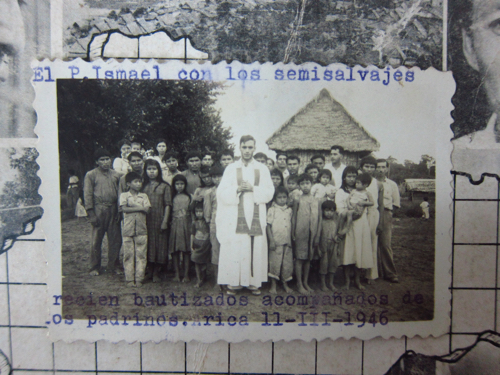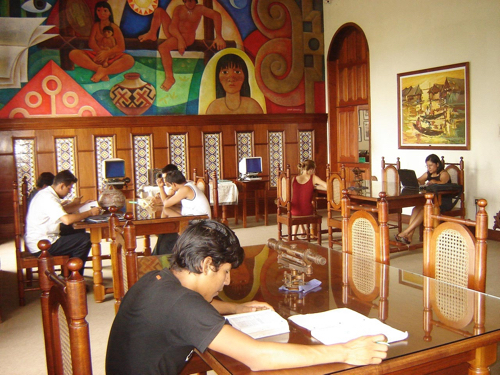In 2011, Amanda M. Smith, assistant professor of literature at UC Santa Cruz, was regularly haunting the stacks of the Biblioteca Amazónica, an archive located in Iquitos, the largest city in the Peruvian Amazon, as she researched what would become her first book, Mapping the Amazon: Literary Geography after the Rubber Boom (Liverpool University Press, 2021). And during one of her visits, the librarian Julio Ramírez beckoned her to a room at the back of the building.
“He showed me all of these books and journals that were severely damaged,” Smith remembered. “As you can imagine, an archive located in the middle of the Amazon rainforest has a lot of problems with humidity. They also have a problem with rodents. The materials were in really bad shape.”
Smith felt like she was being quietly asked to collaborate in the preservation of these rare materials, and the issue weighed on her during her return visits to the Biblioteca Amazónica. When she came to UC Santa Cruz, she was introduced to the UCLA Library’s Modern Endangered Archive Program (MEAP), a project that awards grants to people and organizations working to digitize important historical material in parts of the world without resources to undertake such an effort on their own.
Along with her fellow project leads — Sydney Silverstein, an anthropologist and assistant professor at the Boonshoft School of Medicine, Wright State University; and Ana Varela Tafur, an independent archivist and poet from Iquitos — Smith was awarded a $50,000 grant from MEAP to digitize and preserve thousands of documents, newspapers, and other materials of vital historical importance. Her work is also being supported by The Humanities Institute at UC Santa Cruz.
At the earliest stages of the project beginning as soon as March, Smith and her co-principal investigators will hire a local team and train them on how to use digitization technology to scan and edit images as well as track each item through tagging and metadata. They will also be meeting with the leaders of the Catholic Church in Iquitos to determine a work plan and celebrate the initiation of the project. (The Biblioteca Amazónica is overseen by the Catholic Diocese.)
“The grant money stays locally,” Smith said. “It provides professional development for the team in Iquitos and then everything that is digitized will be in the public domain and available electronically.”
The project will concentrate its efforts on those items within the archives that are unique to the Biblioteca Amazónica and not available elsewhere. One important inclusion will be back issues of three local newspapers — El Eco, La Razón, and El Oriente — that have never been fully digitized before.
“They were key publications for denouncing the crimes of the Amazon rubber boom,” Smith said.
The team will also digitize 3,000 photographs that were taken in and around Iquitos, many of them featuring images of members of Indigenous communities. This will allow families and community members easy access to these pictures, many of which haven’t been seen by anyone outside the Biblioteca Amazónica staff in decades. Additionally, there are plans to scan over 200 maps of Iquitos and the surrounding area, which will provide researchers and the public a way to see how the region was shaped and changed over the centuries.
While the project is supposed to be wrapped up within two years, Smith is hoping that the librarians and archivists at the Biblioteca Amazónica will then be able to continue this important work on their own and grow the digital archive.
“Everybody in Iquitos is so excited,” Smith said. “The Amazon has been hit really hard by the pandemic. So being able to do something good for the region couldn’t have happened at a better time.”




